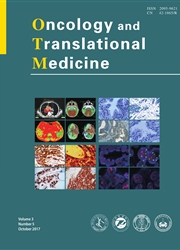

 中文摘要:
中文摘要:
客观:为了调查带的四表示向量,提高了绿色荧光灯的蛋白质(EGFP ) 基因,它在不同 HBV 倡导者的控制下面,被检测;在 hepatocytes 至于他们的表情比较了;非肝的房间线。方法:四个 HBV 倡导者(包括的 enhancers ) 被 PCR 放大,克隆进表示向量 pEGFP-1 的潜水艇。HBV 倡导者控制的四 recombinants 被分析;由限制酶识别了;定序。在进人的肝细胞瘤房间线的 transfection 以后;非肝房间, transfection 效率被 EGFP 表示通过萤光显微镜检查测量;与荧光分析了激活的房间 sorter (FACS ) 。结果:所有目标碎片独立被获得;成功地克隆进表示向量。transfection 结果比它在非肝的房间证明在肝细胞瘤房间, EGFP 的表示是更明显的。在四个倡导者之中, S 基因倡导者介绍了最强壮的 transfection 效率。结论:我们的调查结果显示 HBV 倡导者能在 hepatocytes 带特定的表示,不同倡导者有不同结果,它可能是为肝疾病的基因治疗的一个潜力。
 英文摘要:
英文摘要:
Objective: To investigate four expression vectors carrying enhanced green fluorescent protein (EGFP) genes, which under the control of different HBV promoters, were detected and compared as to their expressions in hepatocytes and nonhepatic cell lines. Methods: Four HBV promoters (including enhancers) were amplified by PCR, subcloned into the expression vector pEGFP-1. The four recombinants controlled by HBV promoters were analyzed and identified by restriction enzymes and sequencing. After transfection into human hepatoma cell lines and non-liver cells, transfection efficiency was measured by EGFP expression through fluorescence microscopy and analyzed with fluorescence activated cell sorter (FACS). Results: All target fragments were separately obtained and successfully cloned into the expression vector. The transfection results showed that in hepatoma cells, the expression of EGFP was more obvious than it was in non-hepatic cells. Among the four promoters, S gene promoter presented the strongest transfection efficiency. Conclusion: Our findings indicate that HBV promoters could lead specific expression in hepatocytes, different promoters had different outcomes, which might be a potential for the gene therapy of liver diseases.
 同期刊论文项目
同期刊论文项目
 同项目期刊论文
同项目期刊论文
 期刊信息
期刊信息
